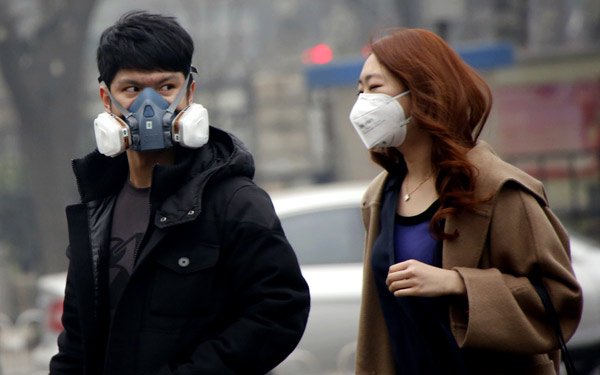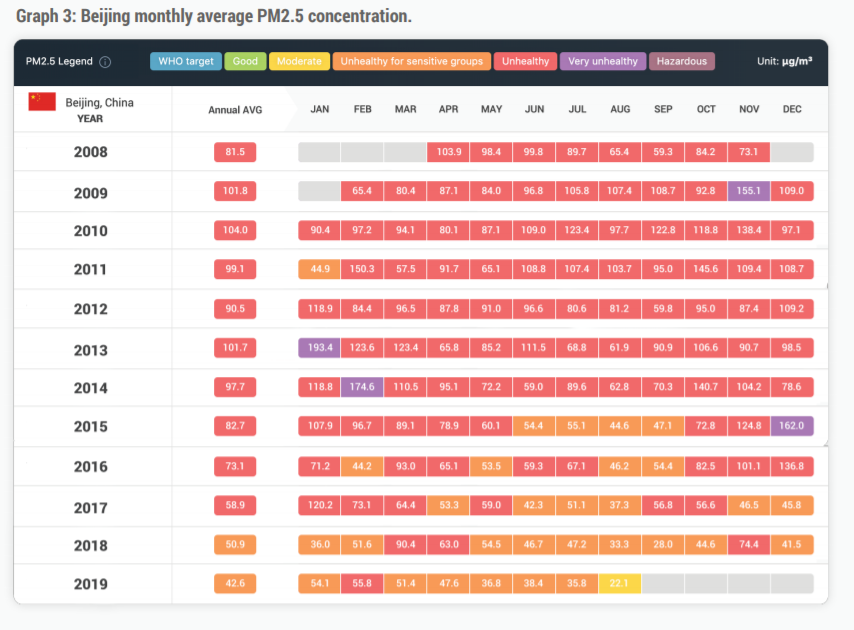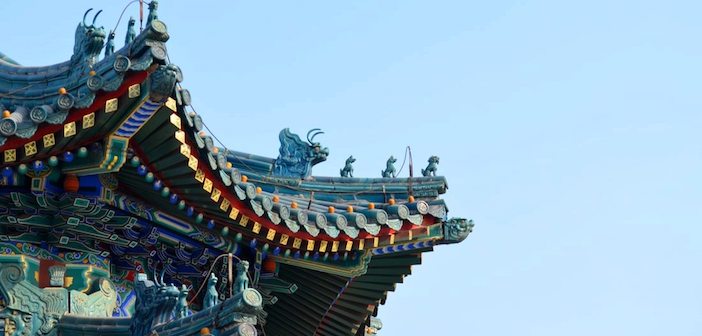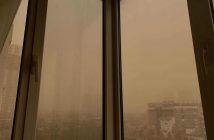IQAir, the Swiss-based air-quality technology and data company has released their annual Beijing Air Quality Report, and it contains nothing but good news for Beijingers.
The report covers trends in Beijing air quality from 2008 to 2019 and shows that the city’s air has been getting better yearly by almost every measure since 2013, putting Beijing on track to drop off of the global top 200 polluted cities by the end of this year. That is quite a leap, considering that the city ranked as having the 52nd worst air in the world in 2016, alongside 139 other Chinese cities.

Could this soon be a scene from the past?
Yearly average PM2.5 concentration has been on a steady decline for the past five years, in which time it has more than halved from 99.7 to 42.6µg/m³. Following that same trajectory, Beijing should meet the WHO air quality standard of maintaining levels under 10µg/m³ by 2022.
The data also suggests a significant improvement in hourly air quality measures: 21 percent of hours were “good” quality in 2018, compared to just 5.2 percent of hours in 2010. Meanwhile, “hazardous” air is nearly non-existent these days, whereas in the period from 2009 to 2015 hazardous air made up about 5-8 percent of hours.

IQAir’s report provides monthly historical data on Beijing’s pollution levels
The blue, blue skies of the summer just-gone-by were also noted. In fact, this summer was the cleanest on record, and August the cleanest ever month on record with an average PM2.5 concentration of just 22.1µg/m³.
Check out the full IQAir report here.
Pollution still climbed last winter in the greater Jing-Jin-Ji area
Despite the overall positive air quality trend in Beijing proper, critics have claimed that the trade war with the United States may be threatening progress in the greater area that includes Beijing, Tianjin, and Hebei province (also known as Jing-Jin-Ji).
As South China Morning Post reports, an expert from the CLSA investment forum attributes the 6.5 percent rise in pollution levels in the area to the economic stimulus efforts in response to the trade war. Of the increased industrial activity, steel production is the primary culprit, which rose by 21 percent in northern China in the winter of 2018-2019. Although steel output continues to rise, its growth is slowing as efforts to curb pollution step up.
READ: Beijing Receives Good News From the Energy, Water, and Wildlife Sectors
Images: Unsplash, China Daily, IQAir




